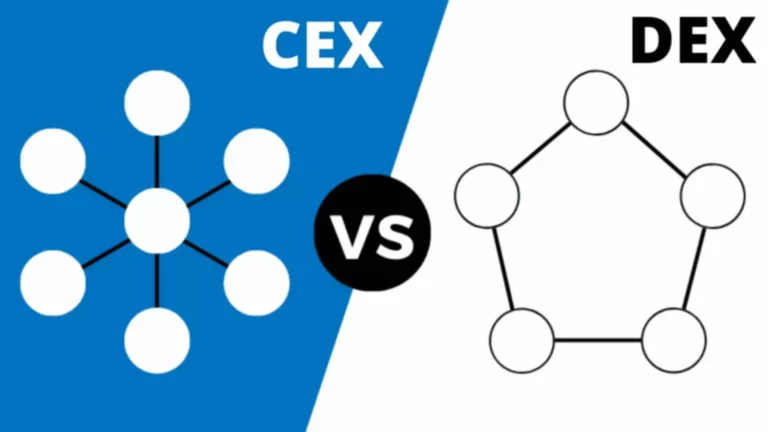Content
The specialised traders use a range of strategies, including technical analysis, algorithmic trading and fundamental analysis. They use these in an attempt to https://www.xcritical.com/ pinpoint trading opportunities for the prop trading firm. Some more specific strategies prop traders employ are merger arbitrage, index arbitrage, global macro-trading and volatility arbitrage to optimise returns. Once these opportunities are identified, the firm sends orders to the relevant exchanges or brokers to execute the desired trades and then wait to see if they are successful.
Board of Governors of the Federal Reserve System
Prop trading (short for proprietary trading) refers to a setup where traders use a firm’s capital to trade and share in the profits, often after meeting specific … Prop trading rules are designed to assess traders’ risk management techniques and trading discipline. Losses are a natural and often unavoidable part of trading, but traders need to make demonstrable efforts to recoup losses and restore their accounts to a profitable state. This could be proprietary trading achieved through tweaking a trading strategy or approach, adjusting take profit and stop loss orders, and reducing position sizes. For this exercise in imagination let us once again borrow Maria and Maalid (sorry Mark, you can jump in again later!) Say you have a prop firm with a Maximum Daily Drawdown limit of 3% for their traders. In other words, the rule is that a trader’s account balance cannot dip below 3% from its highest point in a single trading day.
What is proprietary trading and how does it work?

Some of those requirements have actually fallen short in doing what they were built for such as reducing risk and making the market safer. Any review Financial instrument should look at keeping the best parts of the regulation, but also not be shy in removing rules that we all agree don’t work,” he says. According to Eoghan Hartigan, practice lead for Bovill Newgate’s capital markets wing, the impact of regulation has been particularly acute for small and medium-sized firms which have struggled to meet the new capital requirements.
Exchange Secures SEC Approval for 23-Hour Trading Platform – A-Team
The amount they are risking is clear (the challenge account fee), the trading is very social with lots of engagement on Discord and X, and they feel part of a community. In order for proprietary trading to be effective and also keep the institution’s clients in mind, the proprietary trading desk is normally “roped off” from other trading desks. This desk is responsible for a portion of the financial institution’s revenues, unrelated to client work while acting autonomously. The Volcker Rule, like the Dodd-Frank Act, is generally viewed unfavorably by the financial industry. For example, as noted above, banks’ proprietary trading provided important liquidity for investors.
Financial crime risk management
This is particularly important during periods of market downturns or illiquidity when acquiring or liquidating securities on the open market becomes increasingly challenging. However, proprietary trading desks can also function as market makers, as outlined above. This situation arises when a client wants to trade a large amount of a single security or trade a highly illiquid security. Since there aren’t many buyers or sellers for this type of trade, a proprietary trading desk will act as the buyer or seller, initiating the other side of the client trade. The second benefit is that the institution is able to stockpile an inventory of securities.
- Proprietary trading desks are generally “roped off” from client-focused trading desks, helping them to remain autonomous and ensuring that the financial institution is acting in the interest of its clients.
- It is important to recognise that if the value of the securities in the firm’s inventory declines significantly, the firm itself will have to absorb the losses.
- Prop trading firms allocate their own capital, rather than that of clients, to traders who participate in a range of financial markets and use a variety of financial instruments, and often speculative trades, to generate profits for the institution.
- A trader would typically pay a joining or subscription fee before participating in a challenge or assessment period.
- The benefits of prop trading should be clear, with the main goal of extracting extra profits.
- The prop trading world is dynamic and challenging, but for those who are prepared, it offers a landscape rich with opportunities for growth and success.
Regulators usually consult tech providers and industry stakeholders when drafting new rules. Although we haven’t been approached yet regarding prop trading regulations, we’re ready and willing to collaborate. Devexperts’ expertise can help create practical rules that support market stability and innovation. We look forward to any opportunities to assist regulators in understanding this niche. Already we see a wide array of different methods evaluation firms use to define their operations, challenges, and funded accounts. For example, for funded accounts, some provide actual live accounts; some provide another demo account, and others structure such as accounts for providing the prop firm signals.
Brokers should set up maximum drawdowns, so if your client loses more than a predefined percentage of their initial account balance, all their positions will be automatically closed. One of the key motivations for firms to undertake prop trading – in addition to making money – is securing additional pools of liquidity which helps alleviate trading pressure in difficult markets. With recent regulatory changes, the subscription fee-based model is coming to an end, and many traders choose programs that use live trading accounts and do not charge traders any upfront costs.
Devexperts’ initial KYB process was designed for regulated brokers, exchanges, and wealth management firms. With the rise of prop firms, the DXtrade team has recognized the need for ongoing vigilance. We now extend due diligence beyond onboarding to continuously monitor our clients’ business practices and manage potential risks dynamically.
Firms go into proprietary trading with the belief that they have a competitive advantage and access to valuable information that can help them reap big profits. The firm’s clients do not benefit from the returns earned through prop trading. Nonetheless, they are also targets of the Volcker Rule that aims to limit the amount of risk that financial institutions can take. It enables traders to trade financial products such as stocks, commodity bonds, cryptocurrencies, CFDs, and forex products without using their own money, but rather using the prop trading company’s funds instead. This is in order to generate profits for both the trader and the prop trading company through a predetermined profit-sharing arrangement.
“The prudential regulatory regime for trading firms is just not sufficiently proportionate, and that has had the effect of driving liquidity away,” he says. The prop trading space is relatively new—no more than 10 years old—but growing fast. It was estimated at $6.7 billion globally in 2020 and is projected to expand at a compound annual growth rate (CAGR) of 4.2% from 2021 to 2028.
Regulation is necessary to mitigate these risks, ensure market integrity, and uphold ethical standards within the industry. Separating both functions will help banks to remain objective in undertaking activities that benefit the customer and that limit conflicts of interest. In response to the Volcker rule, major banks have separated the proprietary trading function from its core activities or have shut them down completely. Proprietary trading is now offered as a standalone service by specialized prop trading firms.
To mitigate these risks, it’s crucial to develop proven trading strategies and establish fiduciary relationships with clients and insurance companies. Navigating these challenges requires diligence, continuous learning, and an unwavering commitment to ethical trading practices. These agencies oversee various aspects of trading, ensuring compliance, mitigating risks, and providing covered funds by way of insured depository institutions. However, it allows them to make markets in securities for clients, provided they don’t profit from these trades. Imagine the amount of complaints the regulator would receive, even if the prop firm was operating fairly.

Examining the legal implications is an important step to consider before entering this arena. In other words, the “Loss Recovery Rule.” When it comes to prop trading, people often assume that profits are shared and that any and all losses are assumed by the firm. While this is true to an extent, if a trader wants to be successful in a Prop Challenge and scale up through the ranks as a funded trader, they need to demonstrate not only their ability to gain profits but also to recover losses. The latter is easily implemented with the right prop trading technology with real-time exposure monitoring.


